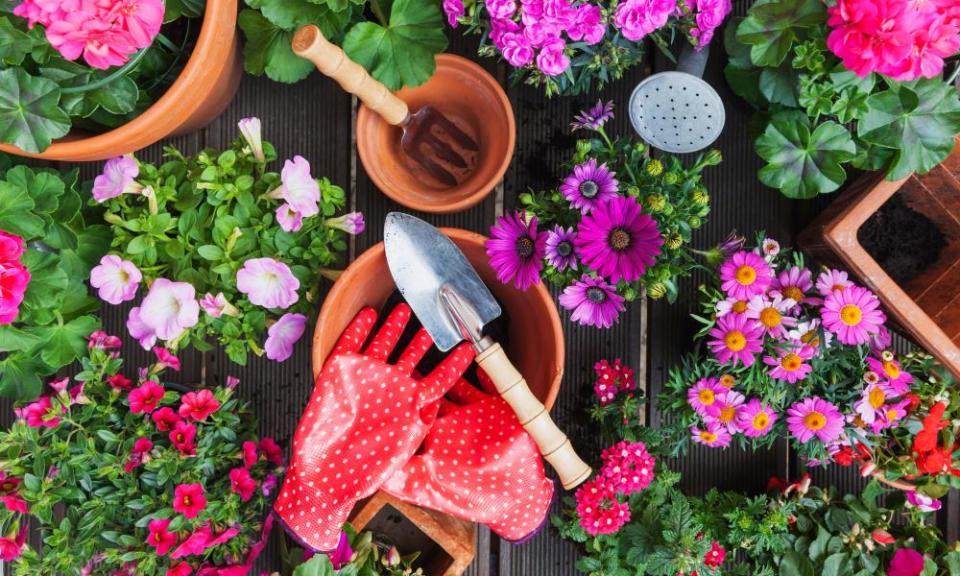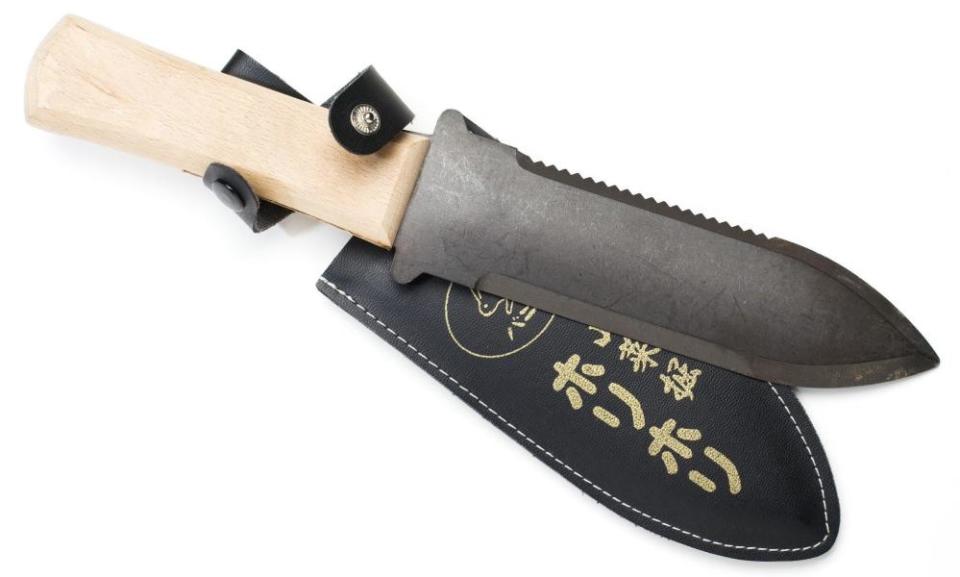Cool tools: the key to cultivating a thriving winter garden

We often hear talk of springtime as the gardener’s moment, but winter is an excellent time to start a patch. I took up gardening last year to cope with the pandemic and found it empowering and uplifting. Not every effort was a success, but over time I learned from my mistakes.
A large part of my learning to garden had to do with tools – which ones to use for what jobs, what brands or quality indicators to look for, how to use them without hurting myself, and how to care for them. Every gardener has their own list of all-star tools without which they can’t imagine doing their regular tasks of weeding, cultivating, planting, and beyond. Japanese tools are surging in popularity among savvy gardeners – it’s no accident, given that Japan’s history of forging steel goes back to the fifth century, and they honed the art of blade-making during the heyday of Samurai culture.
Related: Why is gardening so good for your mental and physical health?
I first noticed this trend when a friend, Adelaide-area plant stylist Emma Sadie Thomson gave me a “Niwashi” Japanese weeding tool. Once I figured out how to use it, it became essential in my gardening tasks.
Thomson discovered Japanese gardening tools when her partner gifted her a pair of Tobisho Japanese secateurs. “They were so precise, yet simple in their action,” she says.
The Niwashi tool is ergonomically designed to follow the movement of your wrist as you move its sharp angled blade through weeds, toward you. It is incredibly efficient without requiring overexertion. I use it for light cultivation before planting, and for gently extracting plants from their tubes or pots. (Note that the Niwashi hand weeder is not necessarily ambidextrous, so if you’re left-handed, ask for one specific to you.)
Thomson, who focuses on pruning during winter when plants are generally dormant, has grown very fond of Japanese secateurs and recommends both Okatsune and Tobisho models for anyone looking to try them.
Jac Semmler, who works as the ornamental plant category manager for the gardening and seed company Diggers Club, spends cool winter days in Melbourne dividing perennials to propagate new plants.
“For me, gardening comes into its own in autumn and winter,” she says. “That’s when I do the most gardening. I’m moving my perennials around, reconfiguring my garden for the next season, making changes from lessons learned in spring and summer.”
“Every couple of years you need to divide your perennials – it reinvigorates them,” Semmler says. She also loves the fact that dividing perennials means that she has plants to give to loved ones, “especially during these times when people are turning to their gardens and enjoying the substance they give to their soul”.
Currently Semmler is making good use of her Hori Hori knife, a Japanese tool whose name translates to “dig dig”. The Hori Hori’s sharp blade is advantageous in “planting or weeding, and especially for dividing plants – you insert it right into the crown or middle of the plant to divide up perennials easily,” she says, noting that the Hori Hori’s form provides a “bit of leverage”.

Semmler is also a fan of the Niwashi weeding tool, and uses a Japanese pruning saw. She says that Japanese tools are often smaller and lighter than western equivalents. “Sometimes you need a heavy tool, but having nice, light tools that are easy to work means you put your energy into the garden and not the tools … you can be a bit lighter on the earth as well.”
Both Thomson and Semmler stress that spending more on quality garden tools should be considered an investment. “If you invest a little more in tools of higher quality and take care of them, they will last you a lifetime in the garden,” Thomson says.
Semmler says gardeners should look for “sturdy, firm handles” when choosing essential items like hand-hoes or trowels but that beginning gardeners need not blow out their budgets on tools straight away. “Just purchase the best you can afford and get out and garden and have fun,” she says.
Related: Frankenstein’s monstera: how popular indoor plants go rogue in the Australian bush
Caring for nice tools involves keeping them clean and sharp. “After a big gardening day, I’ll give them a wash,” says Semmler, adding that winter is a great time to sharpen tools or even take them apart and clean each element, as she does with her secateurs before pruning.
It’s important to note that you don’t need an enormous yard to grow things. Laurie Green, founder of the share economy Crop Swap Australia, began gardening in an urban setting, in her sunroom, and found that the most important tool for her situation was a good watering can.
For indoor or patio gardeners, Green recommends a 1-5-litre can made of galvanised steel. There are a surprising number of variables to consider when choosing a watering can: “Choose a short neck for stability without leakage, useful for most overhead watering, and ideal for seedlings,” says Green, whereas a longer neck “is useful for hanging plants and hard to reach locations”. Green recommends Burgon & Ball or Haws for well-made steel watering cans.

Green points out that plastic watering cans don’t last as long – they are prone to splitting and may break after a year. Over a gardener’s lifespan, this could mean hundreds of dollars spent on plastic – not to mention the waste.
“These days I would not be without my pick mattock,” says Green. She has a productive permaculture garden at her home in Sydney, mostly kept in pots and raised beds, including chickens and bees. Green uses her two-headed pick mattock “for digging, prying, and chopping. The pointed head of the pick is capable of breaking up heavy clay or rocks, and the adze can be used to dig up roots or remove stubborn agapanthus.”
Green says that when choosing a pick mattock, “It’s important to make sure that the handle is comfortable and that the weighting feels manageable when using”. She likes wooden handles, which can be repaired or replaced over time, and recommends oiling wooden tool handles with linseed oil yearly.
I recently began using another incredibly versatile Japanese tool, a short-handled hoe with a strong, wide blade (basically a mattock). It’s a miracle worker for cultivating a small– to mid-sized patch that is populated by stubborn, clumping weeds. Use it for digging small holes while crouching or kneeling on a cushion. It is lighter and more precise than a traditional, long-handled hoe but the blade is tough and heavy, so it really breaks up the earth.
Other than the above, the most essential tool is a hand trowel – you’ll rely on this stainless-steel mini-spade with a wooden handle for digging holes, scooping compost and sand, plopping soil atop new plantings, and a dozen other things.

 Yahoo Movies
Yahoo Movies 